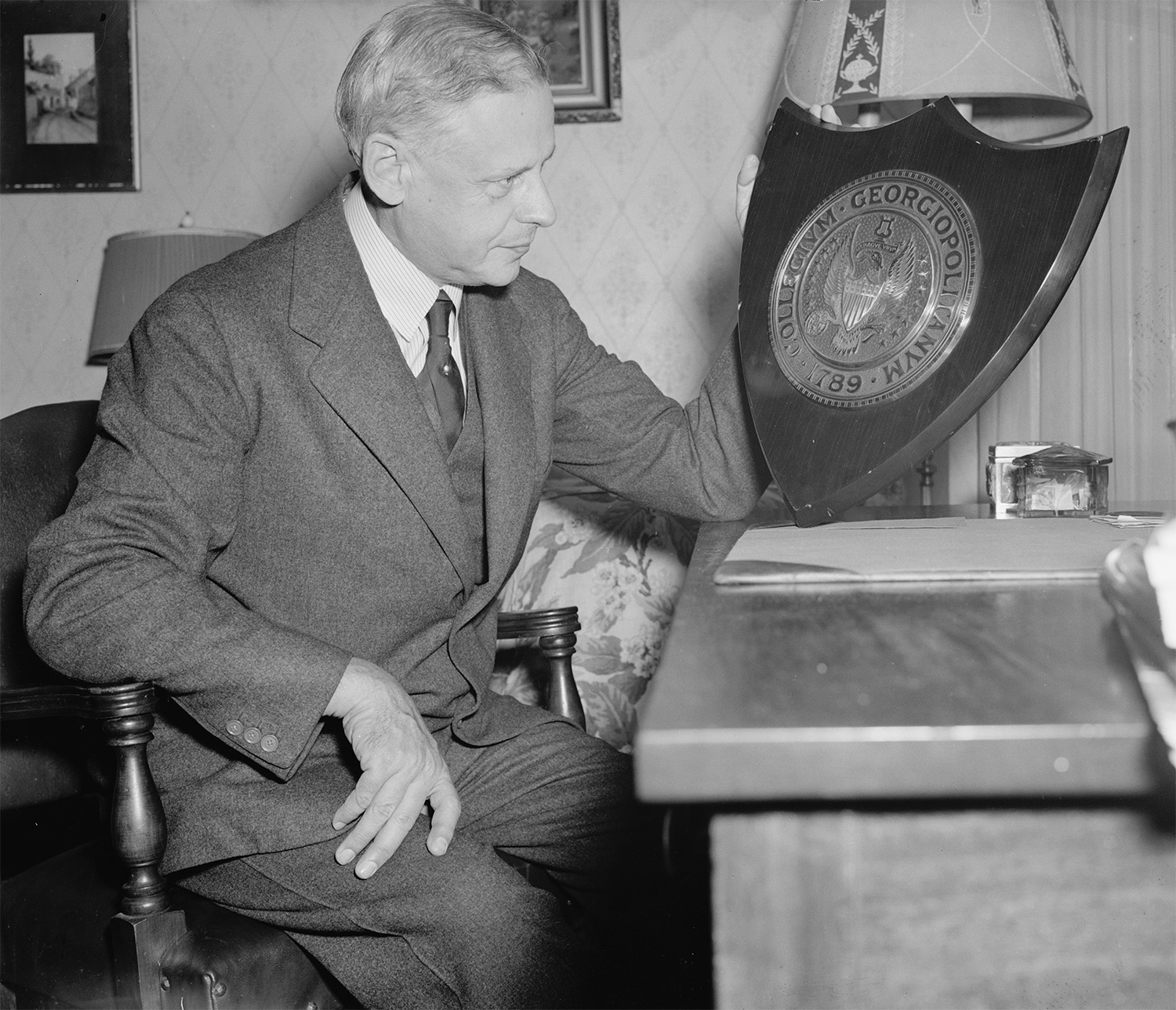The U.S., the “Anschluss” in 1938, and the Expulsion of Vienna’s Jews
The principal Austrian political parties supported “Anschluss” in the 1920s. When Engelbert Dollfuss got rid of Parliament in 1933 and established an authoritarian government, he advocated for a non-German Austrian identity (and thus promoted an anti-Anschluss stance). After his assassination by the Austrian Nazis in the summer of 1934, his successor Kurt Schuschnigg continued this agenda. After Hitler’s seizure of power in Germany in 1933, Berlin’s pressure on the Schusschnigg government increased enormously. With the “July Agreement” of 1936 and Hitler’s meeting with Schuschnigg in Berchtesgaden in February 1938, Nazi pressure on Austria grew even more. In March 1938, the Wehrmacht invaded Austria and annexed the country (“Anschluss”). Now, the “Ostmark” was incorporated into the Third Reich.
George Messersmith, the American Minister in Vienna (1934–37), who had witnessed the rise of the Nazis as the American consul in Berlin (1930–43), warned Washington about Nazi pressure on Austria.
This American Cassandra in Central Europe alerted the Roosevelt Administration: “The question of the independence of Austria has become the primary factor in the maintenance of the peace in Europe.”
Messersmith also warned about growing anti-Semitism in Vienna. However, the Roosevelt administration was mired in the great depression and had to cope with growing isolationism as expressed through the Congressional neutrality legislation. Congress restricted the White House’s room to maneuver vis-à-vis the growing threats of war in Europe and Asia. Roosevelt’s State Department therefore continued American appeasement of the Third Reich during the Austrian crisis and recognized the “Anschluss” quickly de facto (never de jure).
Emboldened by the “Anschluss,” homegrown Austrian Nazis began persecuting their Jewish neighbors. They humiliated the Jews by forcing them to clean the streets of Vienna with toothbrushes, they stole their property (“aryanizations”)—apartments, cars, works of art, businesses—and drove them to suicide or leaving the country. The American Minister John Wiley worked overtime to process the papers of Jews who stood in long lines in front of the U.S. consulate in Vienna to immigrate to the U.S. Going back to the immigration reforms of 1924, the Austrian quota was only 1,435 per annum and was now rolled into the larger German quota. Eventually some 30,000 of the 205,000 Austrian Jews managed to be accepted by the United States. Among them were many prominent academics who found jobs in American universities as well as the youngsters Frederic Morton, who would become a famous non-fiction writer, and Raul Hilberg, the future godfather of Holocaust historiography.
Source: Günter Bischof, “Austria’s Loss – America’s Gain: finis Austria—The “Anschluss” and the Expulsion Migration of Jewish Austrians to the U.S.,” in: idem, Relationships/Beziehungsgeschichten, 57–82.



